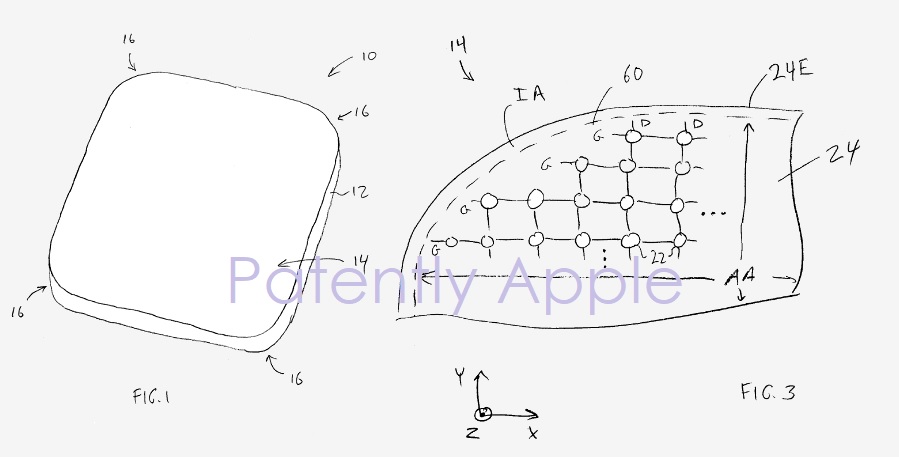Apple Filed Patents for Larger Apple Watch OLED Displays, OLED Burn-In Solution
Apple reportedly filed two new patents for larger Apple Watch displays featuring smooth edges and an OLED display burn-in solution.

As a new report from Patently Apple explains, the first patent is about a display with curved edges. According to the patent application, “the display may include full-strength pixels and may have a band of antialiasing pixels having selectively reduced strengths relative to the full-strength pixels. The antialiasing pixels may be provided with a pattern of strengths that visually smooth content displayed along the curved edges.”
The patent explains that the display could be OLED, LCD, or any other sort of display technology:
Organic light-emitting diode pixels may have drive transistors and associated organic light-emitting diodes. The strength of the antialiasing pixels may be selectively reduced by modifying drive transistor geometry, adding series resistances, or by forming opaque light blocking structures that selectively limit the amount of light emitted by the organic light-emitting diodes. Liquid crystal display pixels may include electrodes of different shapes and/or opaque layer openings of different sizes to form antialiasing pixels with reduced strengths.

Apple’s patent FIG. 1 is a perspective view of an illustrative electronic device (Apple Watch); FIG. 3 is a diagram of an illustrative curved edge of a pixel array in a display.
The second patent application explains a technology that might allow a feature many have clamoured for over the years: an always-on Apple Watch display. While battery life is a primary issue in the adoption of this tech, OLED burn-in has always been a barrier to the feature.
While the patent application doesn’t actually explain how to prevent burn-in, it describes a method for compensating for it by artificially adjusting the brightness and colours of particular areas of the screen:
Organic light-emitting diode (OLED) displays–which are becoming a popular choice for computing device displays–can degrade in a non-uniform manner over their lifespans and lead to unwanted color/brightness artifacts. To address this concern, burn-in statistics–which record historical usage information associated with a given OLED display–can be used to artificially adjust the operation of the OLED display to substantially restore visual uniformity throughout its operation. Notably, such burn-in statistics can take the form of a high-resolution, multiple-channel image that consumes a considerable amount of storage space within the computing device in which the OLED display is included. For obvious reasons, this consumption can dissatisfy users as their overall expected amount of available storage space is reduced for seemingly unknown reasons. It is therefore desirable to store the burn-in statistics in a more efficient manner.
Many have speculated that this technology could lead to an always-on mode for upcoming Apple Watch models, a feature that many have asked for since the first smartwatch was released.
Apple is widely expected to unveil the Apple Watch Series 4, alongside the new iPhone lineup, on September 12 at the Steve Jobs Theater at Apple Park.

